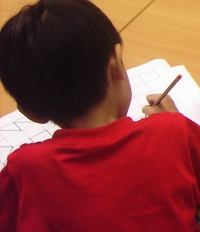Does Reading = Comprehension?
 In a boxing match, there are lightweight and heavyweight categories. Likewise, in the English exam paper, the section called ‘Reading Comprehension’ would be a heavyweight category where many children face difficulties with understanding and scoring with the questions.
In a boxing match, there are lightweight and heavyweight categories. Likewise, in the English exam paper, the section called ‘Reading Comprehension’ would be a heavyweight category where many children face difficulties with understanding and scoring with the questions.
So, what does it take for a child to be a heavyweight champion in this section of the paper?
Let’s take a look at the many underlying skills necessary to accomplish this task.
(And, NO. It does not mean just reading more carefully or reading a few more times at a slower pace)
Again, I feel the need to stress that we are not discussing about the subject, English. We are exploring the underlying sets of abilities that a child needs to have in order to perform this particular learning task – Reading Comprehension.
Using the following passage as an example:
Today, our teacher brought us on a trip to the dairy (ii) farm. We were very excited as we would get to milk (iii) the cows and feed a real calf (iii) with milk (iii)! However, when we arrived, we got quite scared (ii) when we saw a whole herd (iii) of cows roaming (iii) freely during their feeding time. But, we were not as frightened after our teachers told us that cows are considered as sacred (ii) animals in India. I am going to write about my visit in my diary(ii) when I get home tonight.
Q1. Why were we scared when we arrived at the farm?
Q2. What can we feed a baby cow with?
A seemingly simple passage as above would actually require a child to tap into the following combination of skills in order to fully comprehend what has been read:
(i) Visual Tracking
- To follow the sentence from left to right, beginning to end, without skipping lines or words
(ii) Visual Discrimination
- To differentiate between words that are similarly spelled (such as dairy / diary, scared / sacred, or some may misread ‘quite’ as ‘quiet’)
(iii) Meaning of Words (commonly known as Vocabulary)
- To be able to answer the questions that follow, a child would have to understand that ‘calf’ refers to a baby cow and that ‘herd’ refers to a big number of cows
- The word ‘milk’ appeared twice but actually have different contextual meanings (one is referring to an action while the other is a noun)
(iv) Verbal Sequence (how the words are put together to form an overall idea)
- The child perceive meaning only when he/she is able to organise the information into meaningful sequence of sentences, instead of just singular words on their own
So, if your child is facing difficulty with Reading Comprehension, it could in fact be due to him/her having weakness in one or more of the underlying skills needed to do this task – and may not necessary just be about ‘not trying hard enough’ or ‘just did not read it carefully’.
To better understand your child’s learning, JOIN US for our Complimentary Learning Assessment.
Article contributed by Thinkersbox
